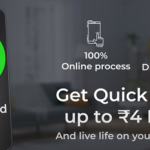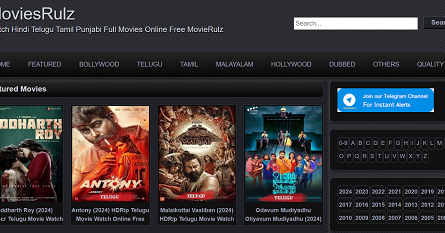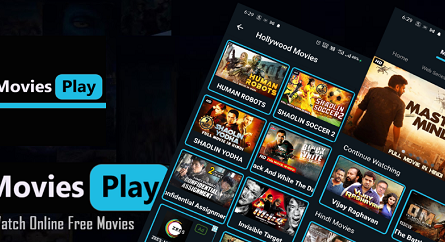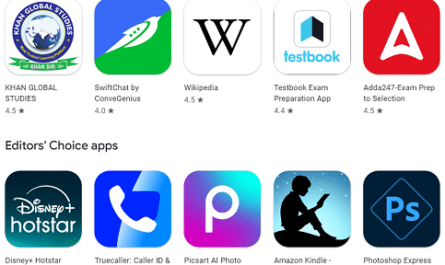Discover the step-by-step guide to mobile app development kaise kare! Learn how to develop your own mobile app with practical tips, tools, and FAQs to kickstart your app journey.
अनुक्रम
Introduction
In today’s fast-paced digital world, having a mobile app for your business or personal use can be a game-changer. But where do you start? If you’re scratching your head and asking yourself, “Mobile app development kaise kare?” you’ve come to the right place. This comprehensive guide will walk you through the entire process, from ideation to launch, with practical tips, tools, and best practices. Ready to dive in? Let’s get started!

1. Ideation and Research
1.1. Define Your App’s Purpose
First things first, what’s your app’s purpose? Are you looking to solve a specific problem or provide entertainment? Maybe you’re aiming to streamline a process or offer a unique service. Whatever it is, clearly defining your app’s purpose is the foundation of your development journey.
- Identify the problem: Understand the pain points your app will address.
- Target audience: Who will benefit from your app? Narrow down your target demographic.
- Competitive analysis: Check out similar apps and identify what they do well and where they fall short.
1.2. Market Research
Before diving headfirst into development, a bit of market research goes a long way. You’ll want to validate your idea and ensure there’s a demand for your app.
- Survey your audience: Conduct surveys or interviews with potential users.
- Analyze market trends: Look at the latest trends in mobile apps related to your idea.
- Study competitors: Download similar apps and analyze their features, user interface, and user feedback.
2. Planning and Design
2.1. Outline Key Features
Once you’ve validated your idea, it’s time to outline the key features of your app. Start with a basic list and prioritize essential functionalities.
- Must-have features: Identify the core features your app needs to function.
- Nice-to-have features: List additional features that can enhance the user experience.
2.2. Create Wireframes and Mockups
Wireframes and mockups are visual blueprints of your app. They help you visualize the layout and user flow.
- Wireframing tools: Use tools like Balsamiq, Sketch, or Figma to create wireframes.
- User journey: Map out the user journey to ensure a seamless experience.
- Feedback loop: Share your wireframes with stakeholders or potential users for feedback.
2.3. Design the User Interface (UI)
Your app’s design plays a crucial role in attracting and retaining users. A well-designed UI can make or break your app.
- Consistency: Ensure consistency in fonts, colors, and elements.
- Simplicity: Keep the design clean and intuitive.
- Usability: Focus on making the app easy to navigate.
3. Development
3.1. Choose the Right Development Approach
Depending on your budget, timeline, and target audience, you can choose from different development approaches.
- Native apps: Developed specifically for one platform (iOS or Android). Offers the best performance and user experience.
- Cross-platform apps: Built using frameworks like React Native or Flutter, these apps run on both iOS and Android.
- Hybrid apps: A mix of native and web apps, built using technologies like Ionic or Cordova.
3.2. Select the Right Tech Stack
Your tech stack will depend on the chosen development approach.
- Programming languages: Swift for iOS, Kotlin for Android, JavaScript for cross-platform.
- Backend: Node.js, Django, or Ruby on Rails for server-side development.
- Database: Firebase, MongoDB, or MySQL for data storage.
3.3. Develop the App
This is where the magic happens! Your development team (or you, if you’re coding solo) will start building the app.
- Agile methodology: Use Agile practices to break down the development process into manageable sprints.
- Version control: Use Git for version control to keep track of changes.
- Testing: Continuously test the app to catch and fix bugs early.
4. Testing and Quality Assurance
4.1. Conduct Different Types of Testing
Testing is crucial to ensure your app runs smoothly and is free of bugs.
- Unit testing: Test individual components for functionality.
- Integration testing: Ensure different parts of the app work together seamlessly.
- User acceptance testing (UAT): Get real users to test the app and provide feedback.
4.2. Use Testing Tools
There are various tools available to streamline the testing process.
- Automated testing: Use tools like Selenium or Appium for automated testing.
- Manual testing: Conduct manual tests to catch issues that automated tests might miss.
- Beta testing: Release a beta version to a select group of users for feedback.
5. Launching Your App
5.1. Prepare for Launch
Launching your app involves more than just hitting the publish button. There’s a lot of prep work to ensure a successful launch.
- App Store Optimization (ASO): Optimize your app’s listing with keywords, descriptions, and visuals.
- Marketing plan: Create a marketing strategy to promote your app.
- Press kit: Prepare a press kit with all the necessary information and assets.
5.2. Submit to App Stores
Each app store has its own submission process and guidelines.
- Apple App Store: Follow Apple’s guidelines and use iTunes Connect to submit your app.
- Google Play Store: Use the Google Play Console to submit your app to the Play Store.
5.3. Post-Launch Activities
Your work doesn’t end after the launch. Post-launch activities are crucial for your app’s success.
- Monitor performance: Use analytics tools to track your app’s performance.
- User feedback: Listen to user feedback and make necessary updates.
- Marketing efforts: Continue your marketing efforts to attract new users.
FAQs
Q1: Mobile app development kaise kare if I have no coding experience?
A1: Don’t worry! There are many no-code platforms like AppGyver, Adalo, and Glide that allow you to build apps without any coding knowledge.
Q2: How much does it cost to develop a mobile app?
A2: The cost varies based on the app’s complexity, features, and development approach. A simple app might cost a few thousand dollars, while a complex app could go up to hundreds of thousands.
Q3: How long does it take to develop a mobile app?
A3: Again, it depends on the app’s complexity. A simple app might take a few weeks, while a complex one could take several months.
Q4: Do I need to develop separate apps for iOS and Android?
A4: Not necessarily. You can use cross-platform development frameworks like React Native or Flutter to build apps that work on both iOS and Android.
Q5: How can I ensure my app is secure?
A5: Implement security best practices like data encryption, secure authentication, and regular security audits to protect your app from vulnerabilities.
Conclusion
And there you have it—a comprehensive guide on mobile app development kaise kare. Whether you’re a newbie or have some experience, these steps will help you navigate the journey of developing a mobile app. Remember, the key to a successful app lies in careful planning, continuous testing, and listening to user feedback. So, what are you waiting for? Start building your dream app today!













